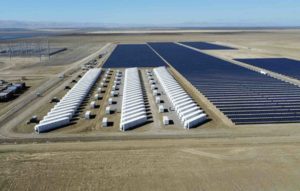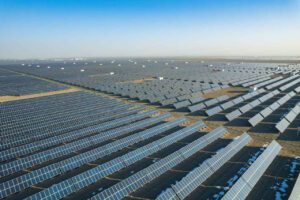The island state of Hawaii has clearly taken the lead in the global pursuit of long duration battery storage, after its main electric utility revealed this week the details of 16 winning battery storage tenders in a second round of auctions that feature up to eight hours of battery storage.
The results are quite stunning for an industry used to being told that batteries are not a reasonable proposition for more than two or four hours of storage, and are normally best in shorter periods where their fast, accurate and flexible response make them ideal to provide essential grid services such as frequency control and more recently inertia.
However, storage lengths of two to four hours have become more common as the owners of large scale wind and solar farms look to store more output to ensure they can be put into the grid when needed most, and when prices are higher. Four hour battery storage proposals have become common in states like California, where batteries are increasingly preferred to peaking gas generators.
Now, Hawaii has pushed the barriers even further back. All but two of the battery storage proposals announced for the islands of Oahu, Maui and Hawaii feature at least four hours storage, while one 30MW project put forward by leading US developer AES proposes eight hours storage (240MWh) on the island of Oahu.
The deep storage proposed for Hawaii is likely a matter of need: It has fewer options for pumped hydro or other non-fossil dispatchable generation, and not so many possibilities for wind energy, which might have offered some balance to the solar plans.
The proposals were detailed by Hawaiian Electric, which is at the forefront of the local government’s law to reach 100 per cent renewables by 2045 – largely to replace the huge bill for imported oil and gas, and the last remaining coal fired generator on the island of Oahu which is due to close in 2022.
The local utilities had initially resisted the push to 100 per cent renewables, but when the governor stood firm finally admitted they could do that, and a lot quicker than the authorities had originally hoped.
 In 2019, it delivered 28.9 per cent share of renewables, despite the loss of the island’s geothermal production following a recent volcanic eruption. Half of it comes from customer solar, and 74 per cent of new rooftop solar in 2019 came with battery storage.
In 2019, it delivered 28.9 per cent share of renewables, despite the loss of the island’s geothermal production following a recent volcanic eruption. Half of it comes from customer solar, and 74 per cent of new rooftop solar in 2019 came with battery storage.
RenewEconomy wrote earlier this week about the big battery that will largely replace the coal fired generator. That project, proposed by the newly emerged Plus Power, via Energy Storage Resources, features a 185MW/565MWh battery to provide storage and grid services and is the largest in the
Other notable winners include the French energy giants Engie and EDF, which will each build battery storage systems of 60MW/240MWh, or four hours storage, as will Hanwha, a South Koran energy conglomerate on the island of Oahu.
Longroad Energy, a company majority owned (80 per cent) by New Zealand infrastructure group Infratil (owner also of a majority stake in Tilt Renewables) and New Zealand Superannuation Fund, won bids for two projects including a 120MW/480MWh battery system on Oahu, which will include the largest solar farm on Hawaii, and a 40MW/160MWh battery system on Maui.
One of the founders of Longroad is Paul Gaynor, the former CEO of former Hawaii wind project developer First Wind, which developed 150MW of wind and 110MW of solar on the island.
The full list of winners can be found here.
RenewEconomy and its sister sites One Step Off The Grid and The Driven will continue to publish throughout the Covid-19 crisis, posting good news about technology and project development, and holding government, regulators and business to account. But as the conference market evaporates, and some advertisers pull in their budgets, readers can help by making a voluntary donation here to help ensure we can continue to offer the service free of charge and to as wide an audience as possible. Thank you for your support.










